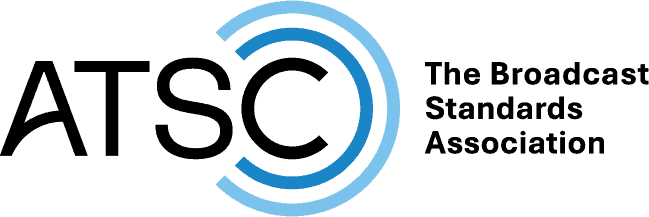- About
- Members
- Sponsors
- Subcommittees
- Technical Documents
- News
- Events
- Spotlight ATSC 3.0
- Contact Us
- Member Login
- Member Meetings
- Advanced Search
Search Site
Member Links
- About
- Members
- Sponsors
- Subcommittees
- Technical Documents
- News
- Events
- Spotlight ATSC 3.0
- Contact Us
- Member Login
- Member Meetings
- Advanced Search
FoBTV in China on ATSC
Posted on July 8, 2014 in ATSC News
A number of ATSC members left the Korea meetings and headed to China and the city of Yantai for the latest sessions of the Future of Broadcast Television (FoBTV) organization. Broadcasting veteran Robert Plummer now chairs the FoBTV Management Committee.
“The trip to China had three events worth noting, The FoBTV summit in Yantai, the IEEE-BTS BMSB (Broadband Multimedia Systems and Broadcasting) and the ISBT (International Symposium on Broadcasting Technology) — both in Beijing. All three events were widely attended by the Chinese and Korean manufacturers of consumer electronics and broadcast communications products,” reports Plummer.
“While the Chinese call Yantai a small city, it has a population that’s approaching two million people, and we had more than 130 people in attendance at the FoBTV event,” said Yiyan Wu of CRC, who chairs the FoBTV Technical Committee. “Frankly, I was surprised at how many people came from all over the globe and from organizations as diverse as Ericsson, Qualcomm, Fraunhofer, Dolby, and many others.”
ATSC 3.0: Foundation for global standard
Since work on FoBTV began (Nov. 11, 2011), the Technical Committee has staged 19 meetings and generated some 129 documents.
“We have a Physical Layer study group and an Application Layer study group at FoBTV. And there is an interesting thing that’s developed. One of FoBTV’s targets is one, unified world standard. The reality is that ATSC 3.0 is doing that job now. In fact, if you look at the ATSC 3.0 standards committees, we have participants from around the world already working on next-generation broadcast technologies within the ATSC. ATSC, DVB, China, and Japan are all involved with ATSC 3.0. If this works well, ATSC 3.0 should be the foundation for a unified global standard. Perhaps there will be a need to enable localization for language issues or special needs, but hopefully we can have a common core standard,” said Wu.
Strong ATSC presence at FoBTV
ATSC TG3 Chair Rich Chernock, Chief Science Officer of Triveni Digital, addressed the FoBTV gathering with a status update on ATSC 3.0.
“While members of the FoBTV are fairly familiar with ATSC 3.0 and work that’s ongoing, I gave an update on our progress. A number of Chinese TV manufacturers and others working in digital TV in China were in the audience. So we wanted to make sure that everyone understood the objectives of ATSC 3.0, provide some background, and explain how this ‘greenfield’ approach will work as the next generation of broadcasting is developed.”
Chernock explained how the physical layer is being put together, what choices are being made in the transport layer, and what’s been going on with coding.
“I was somewhat surprised at the number of Chinese manufacturers who showed up, but in retrospect it shouldn’t have been a surprise since such a large part of global TV manufacturing is taking place in China. There were also broadcasters and policy people from China in attendance,” Chernock relayed. “The Chinese are dealing with the same issues as everyone else – transition details, spectrum scarcity and competing organizations hoping to get more spectrum. I think China is quite interested in where ATSC 3.0 is going.”
Work on ATSC 3.0 continues this summer. “Currently, some essential questions are brewing and one of the ATSC specialist groups is looking for guidance on audio, for instance. We’re getting lots of insights from a broader collection of broadcasters. I think we’re going to see a lot more of that,” Chernock said.
Unified goal of harmonization
NBC Universal’s Glenn Reitmeier, chairman of the ATSC board, says he remains remains optimistic for a greater harmonization among standards as things move forward.
“We have a goal of having a unified or harmonized standard for broadcasting. I keep getting reminded that the Internet is based on global standards. Telecom has not broken out of regionalization in terms of standards, and it strikes me as increasingly apparent that we need to make the same progress in broadcasting,” said Reitmeier.
FoBTV Management Committee chairman Plummer noted that there are several key potential technologies under consideration for FoBTV including a Uniform Protocol Stack, Transmission Efficiency and Flexbility of the Physical Layer, development of a Return Channel, and smart antenna technologies that could be integrated into a global system.
“ATSC will be asking FoBTV to evaluate some technologies. Rich Chernock and I will need to make that move forward,” Plummer said.
The next scheduled FoBTV meeting will be in conjunction with the IBC (International Broadcasting Convention) in Amsterdam in September.
Posted in ATSC News
News Categories
News Archives
Subscribe
Subscribe to The Standard, our monthly newsletter. Learn More
Join ATSC
ATSC is a membership organization with both voting and observer categories. Voting members include corporations, nonprofit organizations, and government entities, and they participate actively in the work of ATSC. Observers are individuals or entities not eligible to be a voting member.
Subscribe to our Newsletter
Subscribe to The Standard, our monthly newsletter, to stay up-to-date with ATSC news and events around the world.
Site Links
Contact Us
Advanced Television Systems Committee, Inc.
1300 I Street NW, Suite 400E
Washington, DC 20005
Do you have questions about ATSC?
About ATSC
The Advanced Television Systems Committee, Inc., is an international, non-profit organization developing voluntary standards and recommended practices for digital terrestrial broadcasting. ATSC member organizations represent the broadcast, broadcast equipment, motion picture, consumer electronics, computer, cable, satellite, and semiconductor industries. ATSC also develops digital terrestrial broadcasting implementation strategies and supports educational activities on ATSC standards.
© 2025 ATSC




































